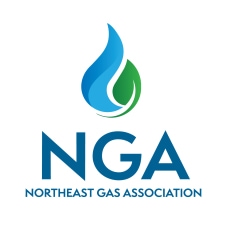Distribution Systems
KEY POINTS
- Natural gas use remains strong in the Northeast region.
- There are 12 million households using natural gas in the Northeast, according to U.S. EIA, representing over 50% of all households.
- Natural gas utilities in the region are leaders in efficiency program investments and in seeking low-carbon supply inputs.
- Natural gas has consistent benefits over other fuels: cost, supply, and lower emissions.
- Parts of the region face challenges in securing sufficient pipeline capacity given system constraints and siting difficulties.
Natural Gas is the Optimum Choice for the Northeast U.S.
Natural gas is the preferred choice for homeowners and businesses in the Northeast region. It is the leading home heating fuel in the U.S., fueling 46% of homes (followed by electricity at
41%). In the Northeast, natural gas fuels 54% of homes; some state shares include 73% of New Jersey homes, 59% of New York's, 53% of Rhode Island's, 51% of Massachusetts's, and 51% of
Pennsylvania's [data source: U.S. Census Bureau, reflecting 2021 data, released September 2022]. Natural gas is also the leading single fuel for electric power generation throughout the
region - about 50% of current electric generating capacity.
This issue brief by the Northeast Gas Association (NGA) outlines some recent market developments on
natural gas.
Natural Gas is the Most Affordable Choice for Consumers
The trend in natural gas commodity prices in the U.S. over the last decade generally has been toward lower and more stable prices, as the country experienced high domestic production, especially since 2008 and the rise of shale gas production.
The key variables in natural gas price formation include production levels, demand growth, the state of the economy, storage levels, weather, and alternate fuel prices.
The outlook as of February 2023 is for natural gas commodity prices to decline after rising prices in the previous two years. 2021 saw higher commodity prices for all fuels, including natural gas, as economic demand recovered as COVID restrictions eased, while at the same time supply chain and transport issues challenged the global delivery market. The trajectory for energy commodity prices in 2022 was even higher, as a result of inflation and the impact of Russia's war on Ukraine.
In its February 2023 "Short-Term Energy Outlook," the U.S. EIA forecast "that the Henry Hub natural gas spot price will average $3.40 per million British thermal units (MMBtu) in 2023, down almost 50% from last year and about 30% from our January Short-Term Energy Outlook (STEO) forecast." EIA cautions that "extreme weather events and production freeze-offs could still potentially cause price spikes at both the Henry Hub and in regional markets, but that potential diminishes as spring approaches, particularly now that inventories have moved back above the five-year (2018-2022) average."
At the same time, EIA also noted in October 2022, in its annual "Winter Fuels Outlook", that natural gas would be the lowest cost home heating energy source in the Northeast for the 2022/23 winter
Environmental Benefits
Natural gas has lower emissions than other heating fuels such as oil and propane, and is highly efficient and reliable.
Natural gas efficiency program investments are significant in this region; 40% of all U.S. gas efficiency investments emanate from the nine Northeast states.
Methane emissions in the region related to natural gas systems have been declining thanks to accelerated replacement of older system components.
Another element of focus for the natural gas industry is utilizing new technology innovations to reduce or offset carbon intensity in supply. These include renewable natural gas (RNG),
hydrogen, and carbon capture sequestration.
Natural gas has been the leading fuel for power generation in recent decades, along with renewables, in the U.S. and the region. Air emissions from power plants have declined substantially in
the Northeast in recent years, thanks in great part to the use of natural gas.
Finally, natural gas remains a flexible energy source, suitable for heavy-duty transportation.
Regional Demand Continues; Pipeline Constraints
Present Market Challenges in Certain Parts of Region
As noted above, natural gas remains the leading home heating fuel source regionally and nationally. In a March 2019 issues brief, U.S. EIA stated: "The residential and commercial sectors [nationwide] are also expected to continue using more natural gas. For instance, EIA projects that natural gas furnaces and boilers will be used in 55% of U.S. homes in 2050, an increase from their 49% share in 2018."
Natural gas utilities in the region continue to receive requests for service, and are seeking to provide support where possible. Parts of the Northeast region have moratoria in place on adding new natural gas customers, as demand exceeds available pipeline system supply. Utilities are exploring all options to meet demand, from supply inputs to efficiency and demand-side management.
The natural gas distribution companies continue to work every day to serve customer needs safely, reliably, cost-effectively, and in an environmentally responsible manner.



